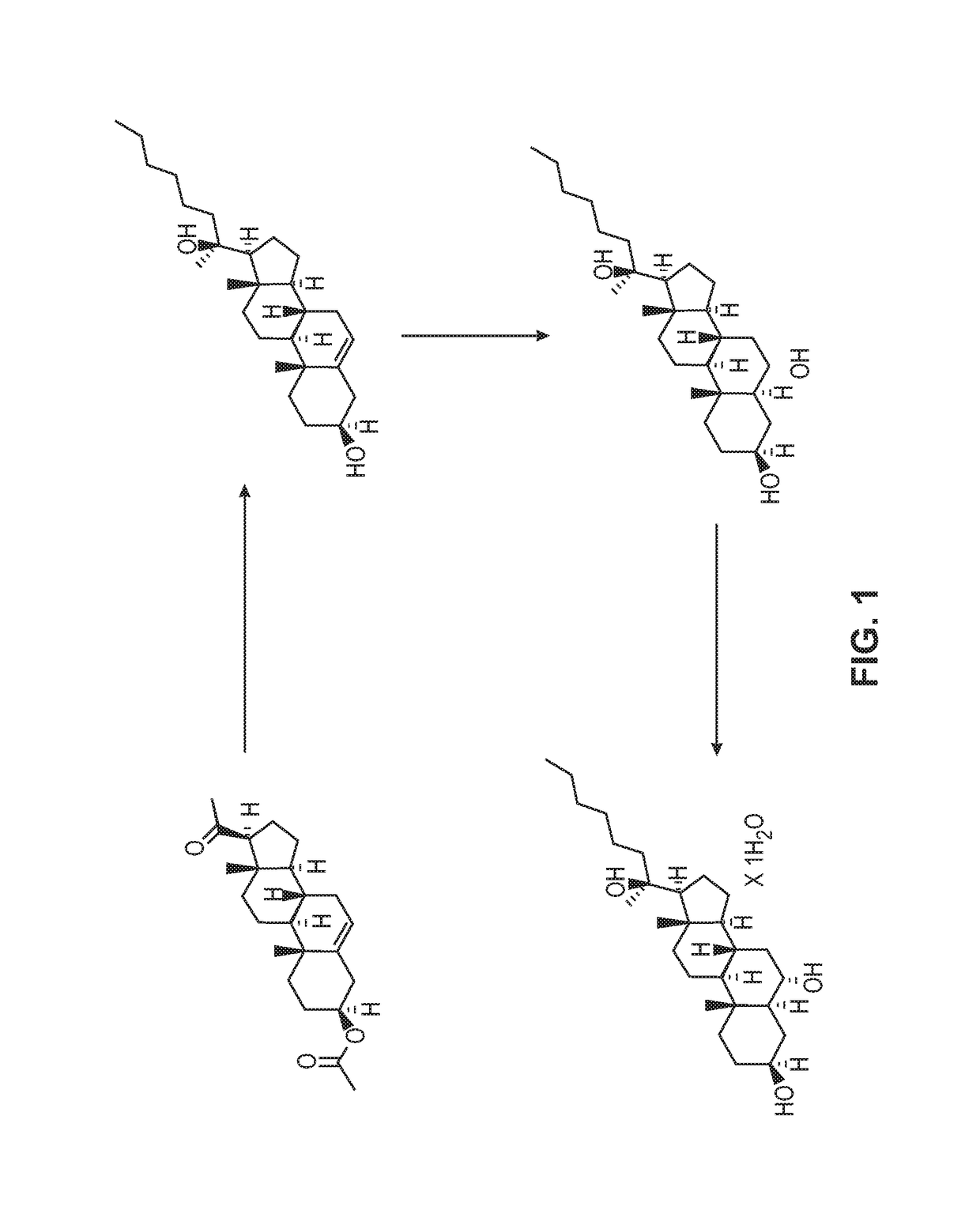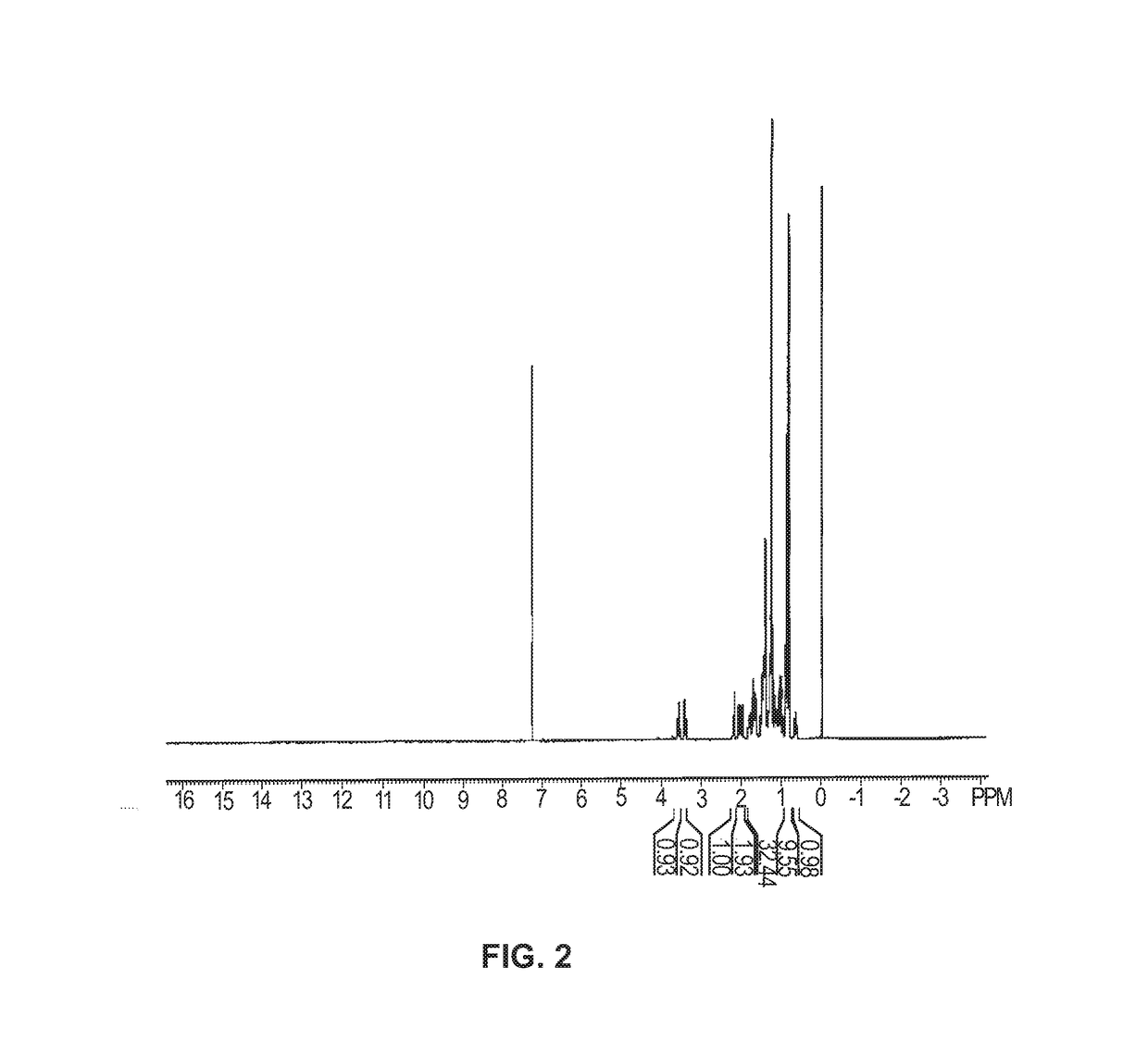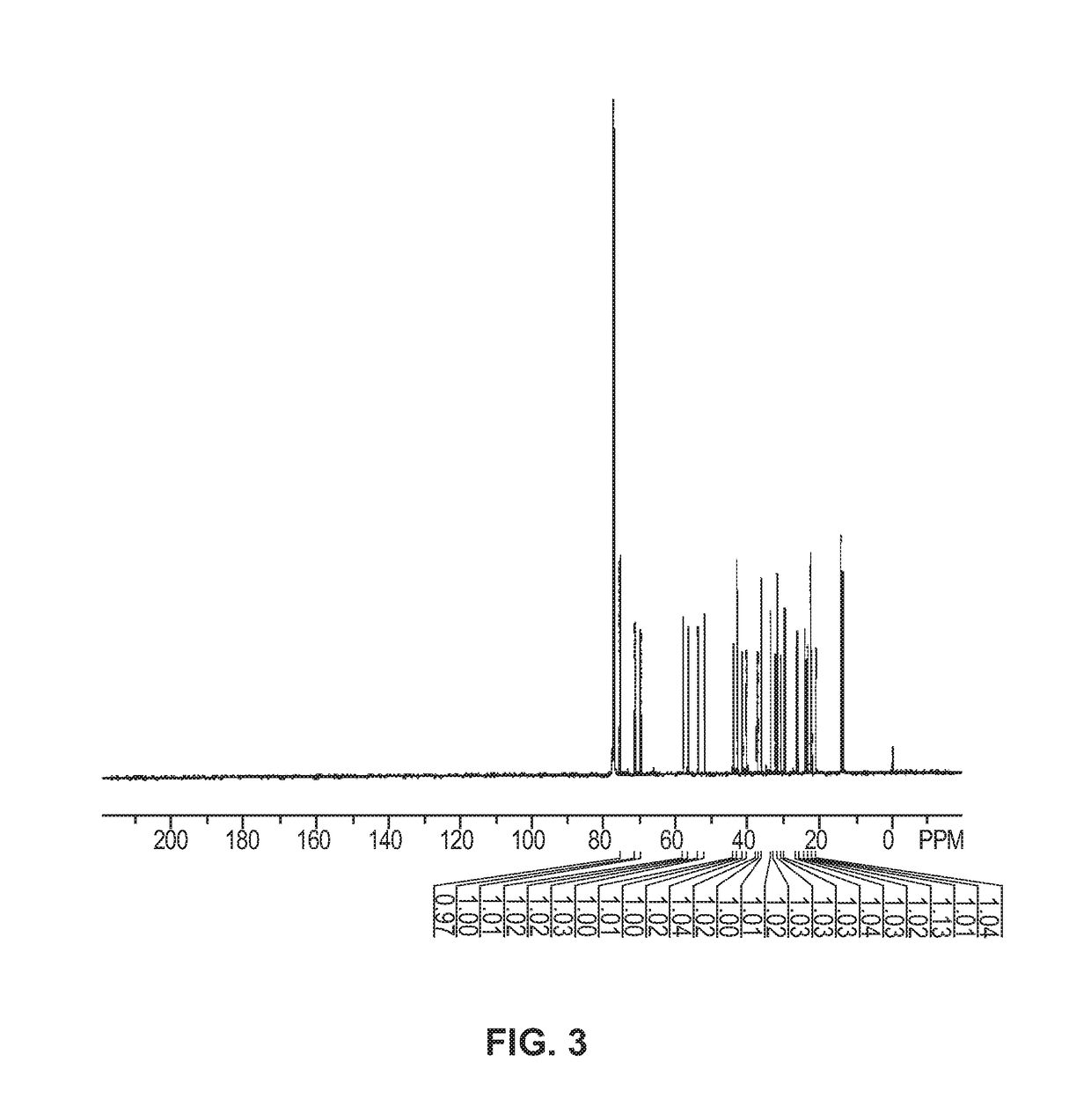Methods for the separation and detection of an oxysterol
a technology of oxysterol and separation method, which is applied in the field of methods for separation and detection of oxysterol, can solve the problems of insufficient chromatography, insufficient robustness or sensitiveness of industry detection techniques paired with high-performance liquid chromatography (hplc) to detect oxy133 in the presence of related impurities and degradation, and difficult detection of known impurities closely related to the parent compound
- Summary
- Abstract
- Description
- Claims
- Application Information
AI Technical Summary
Benefits of technology
Problems solved by technology
Method used
Image
Examples
example 1
[0170]Preparation from Pregnenolone Acetate
[0171]8.25 mL n-hexylmagnesium chloride (2 M, 16.5 mmol) in THF was added to a solution of pregnenolone acetate in THF under vigorous electromagnetic stirring and ice bath cooling. The pregnenolone acetate solution contained 1.79g compound 1, pregnenolone acetate, (5 mmol) in 4.5 mL THF. The addition took place over 2 minutes. After addition was completed, the mixture was stirred at room temperature for 3.5 hours, at which point the mixture had turned to a gel. The gel was then digested with a mixture of saturated aqueous NH4Cl and MTBE (methyl tertiary-butyl ether). The organic layer was separated, washed with water three times and evaporated. The residue was separated by silica gel column chromatography using an EtOAc (ethyl acetate) / petroleum ether mixture (ratio 70 / 30) to give compound 2, a diol, as a white solid. 1.29 g (3.21 mmol) of the solid diol was extracted for a 64% isolated yield. The reaction is shown below in A:
[0172]
[0173]Th...
example 2
[0175]Preparation from Pregnenolone
[0176]Alternatively to Example 1, compound 2 of reaction scheme A above can be prepared from pregnenolone shown below in 13 utilizing the same procedure as utilized for the conversion of compound 1 to compound 2. In this procedure 10 g of pregnenolone was converted to 7.05 g of compound 2, which accounted for a 55% yield.
[0177]
[0178]2500 mL of n-hexylmagnesium chloride (2 M, 5 mol) was charged to a reactor and the solution was cooled to −5° C. A solution of pregnenolone acetate in THF was charged to the reactor at a rate which maintained the internal reaction temperature below 1° C. The pregnenolone solution contained 500 g pregnenolone (1.4 mol) in 8 liters THF. After the addition was complete, the mixture was held at 0° C. for 1 hour then allowed to warm to room temperature overnight. The reaction mixture had become a solid, gelatinous mass. 2 liters of additional THF was added followed by 10 ml of glacial acetic acid. The reaction mixture was co...
example 3
[0180]The crude hexyl diol product (800 grams) as dissolved in 8 liters of THF, charged to a reactor, and was cooled to −5° C. 6300 mL of borane-THF complex (1 M, 6.3 moles, 4.5 equivalents) in THF was charged at a rate which maintained the internal reaction temperature below 1° C. Once the addition was complete, the reaction mixture was stirred at 0° C. for 1.5 hours then allowed to warm to room temperature overnight. The reaction is shown below.
[0181]
[0182]The reaction mixture was quenched by addition of a mixture of 10% sodium hydroxide (4750 mL) and 30% hydrogen peroxide (1375 mL). The quench was extremely exothermic and required several hours to complete. The internal temperature was maintained below 10° C. After the addition of the quench volume was complete, the mixture was held cold for 1.5 hours then allowed to warm to room temperature overnight. 8 liters of dichloromethane was then added. The organic layer was isolated and washed with 7 liters of fresh water, and was conce...
PUM
| Property | Measurement | Unit |
|---|---|---|
| concentration | aaaaa | aaaaa |
| temperature | aaaaa | aaaaa |
| temperature | aaaaa | aaaaa |
Abstract
Description
Claims
Application Information
 Login to View More
Login to View More - R&D
- Intellectual Property
- Life Sciences
- Materials
- Tech Scout
- Unparalleled Data Quality
- Higher Quality Content
- 60% Fewer Hallucinations
Browse by: Latest US Patents, China's latest patents, Technical Efficacy Thesaurus, Application Domain, Technology Topic, Popular Technical Reports.
© 2025 PatSnap. All rights reserved.Legal|Privacy policy|Modern Slavery Act Transparency Statement|Sitemap|About US| Contact US: help@patsnap.com



